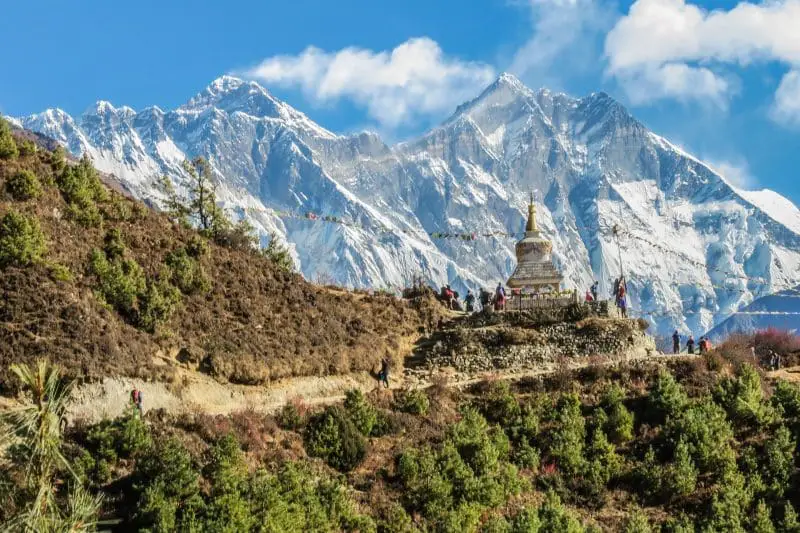Welcome to Animals and Wildlife in Nepal, the home of the tallest mountain in the world Mount Everest.
The range is not, however, the only wonder in this stunning country. So get ready to read about the abundant wildlife in the beautiful country of Nepal!

Jump ahead to your favorite animal!
Key Points
| Animal | Asian Elephant | One-Horned Rhinoceros | Royal Bengal Tiger | Snow Leopard |
|---|---|---|---|---|
| Description | Found in the mountains, estimated 350-500 in Nepal, 1/10th of global population | The largest mammal in Nepal, shoulder height 2.5-3m, males up to 5,000 kg | Largest of Asian big cats, up to 3m long, over 250 kg | Found in central Asian mountains, 35-55 kg, 1.8-2.3 m long |
| Social Behavior | Highly social, live in close-knit groups led by mature females | Usually solitary, graze and wallow together occasionally | Mainly solitary, sometimes interact, territories vary | Solitary, agile in steep terrain |
| Communication | Sounds, scents, physical contact, low-frequency sounds for long-distance communication | Not mentioned | Not mentioned | Not mentioned |
| Habitat and Populations | In Nepal, culturally significant, domesticated historically | Found in South and Southeast Asia, two major populations in India and Nepal | Historically widespread in Nepal, population decline due to habitat loss | Found in the mountains, estimated 350-500 in Nepal, 1/10th of the global population |
| Threats | Not mentioned | Habitat loss, poaching, human conflict | Prey depletion, poaching, habitat degradation | Livestock depredation, poaching, habitat loss |
| Conservation Efforts | Gainda Gasti armed Rhino Patrol Unit, Chitwan National Park | Chitwan National Park, establishment of wildlife reserves | National Parks, Wildlife Conservation Act, Tiger Ecology Project | Various conservation committees, workshops, field studies |
Asiatic elephant
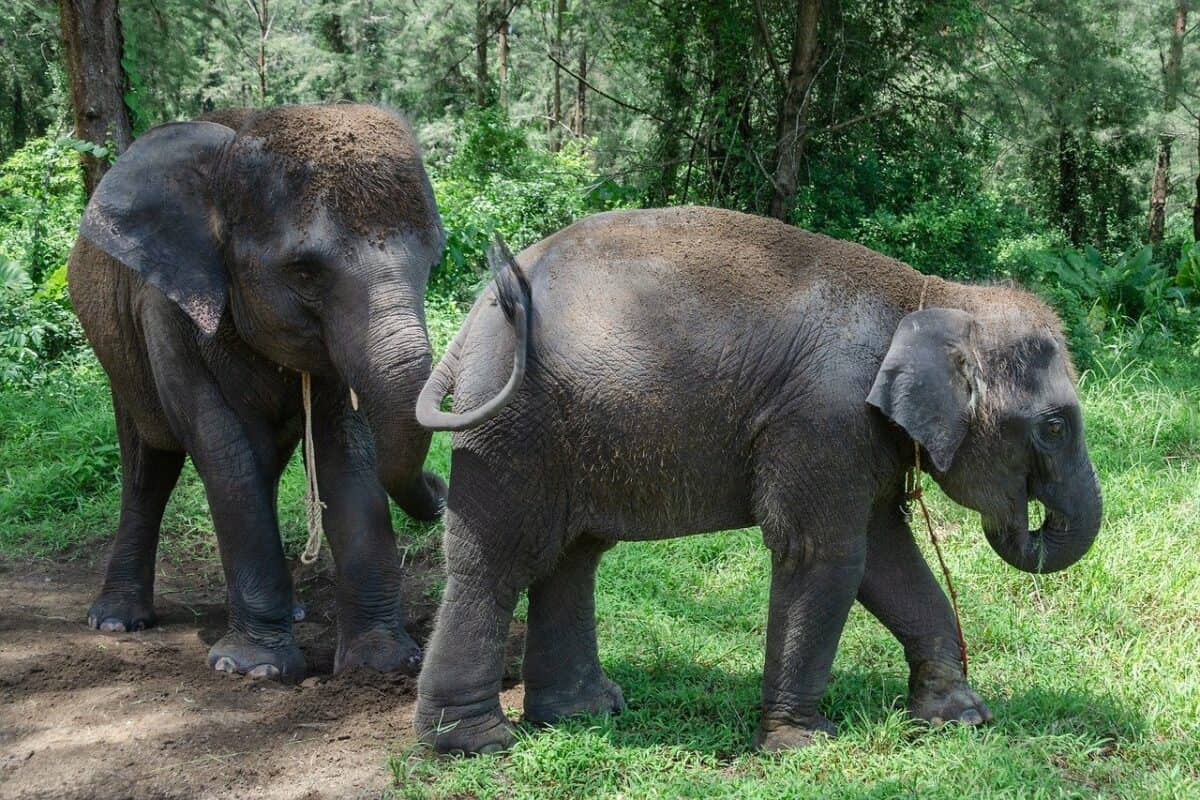
The Asian elephant is the largest of all mammals in Nepal today. Its shoulder height varies from 2.5 to 3m, and a male elephant can weigh up to 5,000 kg!
Elephants possess incredible memory and enjoy a lengthy lifespan, much like humans. They are highly social animals that live in close-knit groups consisting of related individuals, led by a mature female. Within these groups, communication happens through a combination of sounds, scents, and physical contact.
One fascinating aspect of elephants is their ability to produce low-frequency sounds, which are too deep for humans to hear. These sounds are incredibly useful for communicating across long distances. The pitch of these sounds determines how far the waves can travel.
The elephant’s trunk, an elongated nose with nostrils at its tip, serves as a versatile tool. It’s capable of a wide range of tasks, from lifting heavy tree trunks to grasping tiny objects like peanuts. In the case of Asian elephants, they have a unique “finger” on their upper lip that aids in these tasks.
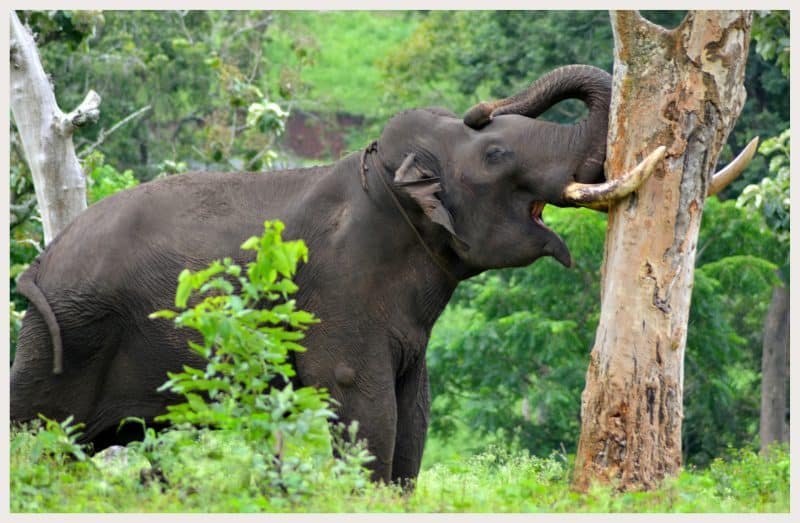
History of Elephants in Nepal
In Nepal, elephants hold significant cultural importance, with a rich history of domesticating wild elephants for various purposes. Stories featuring elephants are abundant in Hindu religious texts, highlighting the special place these creatures have in local traditions.
The tradition of using domesticated Asian elephants in Nepal dates back to the era of King Man Dev from the Lichhavi Dynasty. Historian Baburam Acharya notes that the kings of Makwanpur region captured wild elephants from the Bhabar forests and sold them to the Mughal rulers of India.
Jung Bahadur Rana, the first Prime Minister of the Rana regime, reportedly employed the challenging technique of “kheda” to capture three wild elephants in 1851 AD. During the Rana rule, domesticated elephants held immense value as reliable work animals. The Rana rulers established “Hattisars,” which were camps for domesticated elephants and their handlers, primarily used for grand game hunting. At that time, Nepal had 32 permanent and temporary Hattisars.
Elephants were often likened to all-terrain vehicles, capable of traversing various landscapes and weather conditions. They symbolized strength and prestige. In earlier times, trained elephants served as a mode of transportation and were used for hunting large game. Rulers in Asian countries recognized the versatility of trained elephants, employing them in warfare, the timber trade, transportation of goods, and even in religious ceremonies. This highlights the exceptional role of elephants in the history of Nepal’s wildlife and culture.
The one-horned rhinoceros
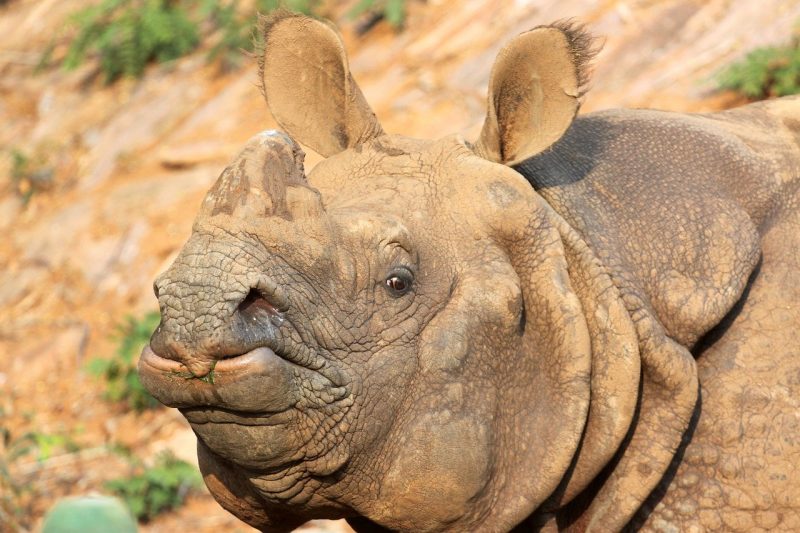
The Indian rhinoceros is second only to an elephant in size. An adult rhino usually weighs between 2-2.5 metric tonnes. Rhinos usually live solitary lives. Calves follow their mothers for 1-3 years. Females are sexually mature between 5 and 7 years old, while males mature at about 10 years of age.
Threatened population
Today, however, no more than 2,000 Indian rhinoceros remain in the wild, with only two populations containing more than 100 rhinos: Kaziranga National Park in Assam, India (1,200) and Chitwan National Park (CNP), Nepal (600). Despite efforts from Bhutan and India, there are much fewer rhinos living along the Indo-Bhutan border.
Nepal’s Chitwan Valley, once a rhino haven protected by the Ranas’ hunting whims and malaria’s isolation, saw its fortunes flip. Pre-1950, roughly 1,000 rhinos thrived with minimal impact from the Tharu communities, immune to the valley’s fever. But the Rana regime’s fall and malaria’s demise opened the door. Thousands flooded in, transforming vast swathes of habitat into farms, settlements, and progress, pushing the rhino population towards an uncertain future.
Conservation efforts
Facing a plummeting rhino count, Nepal acted swiftly. In 1961, the “Gainda Gasti” patrol unit, armed and determined, was formed. Soon after, precious rhino havens along the Rapti, Narayani, and Reu rivers were declared the 544 sq km Chitwan National Park (CNP) in 1973. By 1984, CNP’s borders stretched to 932 sq km, earning it World Heritage status for its teeming biodiversity.
DNPWC’s efforts bore fruit. Once on the brink, the rhino population, protected and with sufficient habitat, gradually rose. CNP became a beacon of hope, proving that robust recovery is possible with dedicated protection. It stands as a testament to the resilience of life, restored to its glory while preserving vital genetic diversity.
Rhino Habitat
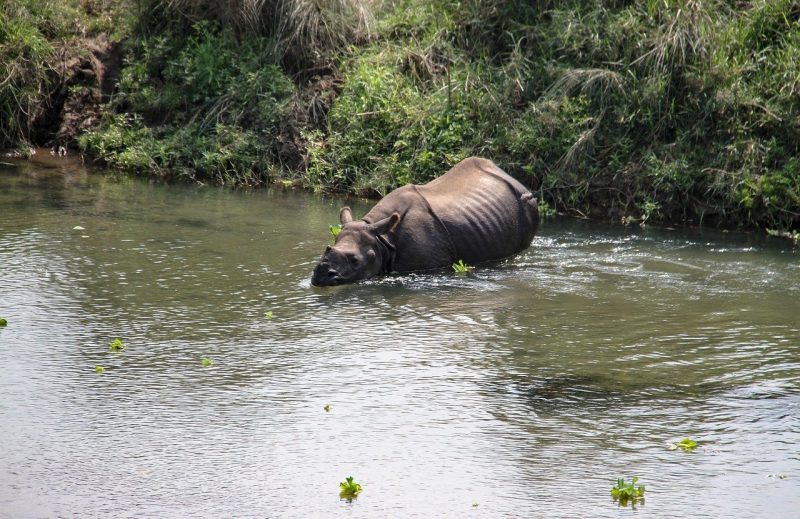
Wildlife in Nepal: In Chitwan National Park, rhinos call the alluvial plains of the subtropics home, where year-round water and lush grasses abound. Many now reside within designated “blocks” of ideal habitat. But floodplain grasslands, particularly those along the Rapti, Narayani, Reu, and Dhungre rivers, hold the key. Here, towering Saccharum spontanium grasses (4-6 m!) reign supreme, offering the single most crucial habitat for these mighty giants.edit
You can discover more about Rhinos with our dedicated article all about where to see rhinos in the wild.
Royal Bengal tiger
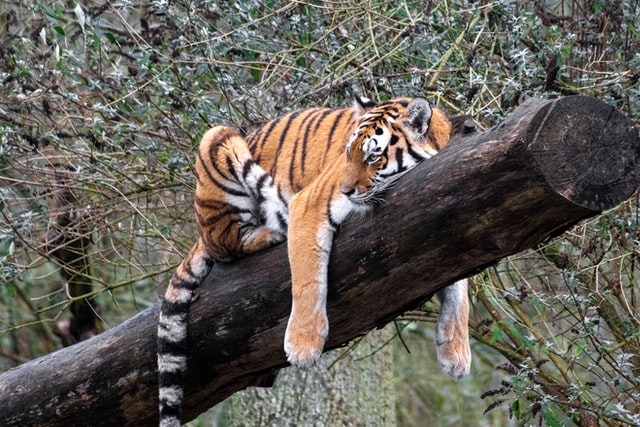
Tigers are the most charismatic and well known largest of all the Asian big cats. They have narrow black, brown or gray stripes on their heads, bodies and limbs. Tigers can be differentiated easily since the pattern of stripes is unique to each individual.
An adult tiger can measure nearly 3 meters from the nose to the tip of the tail, and can weigh more than 250 kg. Adult tigers are mainly solitary preying mainly on deer and wild pig. However, sometimes 2 tigers with neighbouring territories may have a friendly interaction with each other.
Depending on prey abundance, their territories can range from 10–400km2 (females) and 30–1,000km2 (males). Tiger cubs follow their mother until the age of two. Even though the willingness to catch a moving prey is instinctive in tigers, a long learning process is needed to acquire the skills necessary to catch a wary and fast prey animal. Tigers are never replaced on their range until they die.
Threatened population
Tiger populations are under threat from prey depletion, tiger poaching and habitat degradation and fragmentation. These threats arise from a variety of factors linked to local rural uses from variety of factors linked to local rural uses as well as economic development projects. Essential challenge now lies in setting appropriate priorities in responding to these threats. In Nepal, fragmentation and loss of natural habitat and poaching are the major impediment to effective conservation.
Tigers are facing a serious danger of becoming extinct in the wild. There were once nine subspecies of tigers. Out of the nine subspecies, Caspian, Javan and Bali have already been extinct and the rest are endangered. Historic tiger range ran from Turkey, Tibetan plateau, Manchuria and the Sea of Okhotsk in South and Southeast Asia.
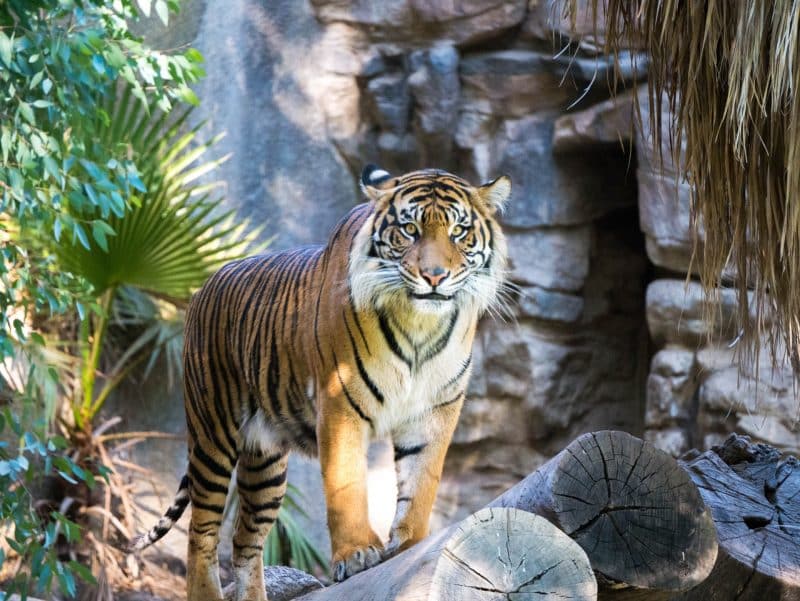
Since 1998, tigers have lost 40 percent of their habitat. At present they occupy only about seven percent of their former range and are confined only in South and Southeast Asia, China and the Russian Far East. They are now found in Bangladesh, Bhutan, China, Cambodia, India, Indonesia, Laos, Malaysia, Myanmar, Nepal, Russia, Thailand, Vietnam.
Tigers were once distributed throughout the lowland Terai and the adjoining foothills of the country. After the collapse of the Rana regime in 1950s and the eradication of malaria during the mid-1950s, Chitwan opened to outsiders. Thousands of people can down from the mid-hills and large swathes of wildlife habitat were cleared for human settlements, agriculture and other development activities.
Uncontrolled hunting of wild animals occurred until the mammalian species including tiger and rhino were nearly exterminated from the area. Swamp deer, one of tiger’s major prey species, disappeared from Chitwan by early 1970s. Significant decrease in tiger population was noticed during 1960s and 1970s.
Conservation efforts
In 1964, the late King Mahendra declared the southern part of Chitwan valley as Mahendra Mriga Kunj. Later in 1973, National Parks and Wildlife Conservation Act 2029 was enacted and Chitwan National Park was declared. Parallel to the establishment of CNP, the Tiger Ecology Project was initiated in the early 1970’s as a joint venture of the government of Nepal , the Smithsonian Institution, and World Wildlife Fund to conduct research on the tiger and its prey species.
Based on recommendation of these studies, the park boundaries were extended in 1977 to present size of 932 sq km. Furthermore as an extension to CNP, the Parsa Wildlife Reserve was gazetted in 1976 as an extension of CNP as an approach to maintain the continuity of habitats based on the ecosystem management approach. Beside these, other significant works of the period were Operation Tiger and Tiger Conservation Project. Research and Monitoring Unit has been established to monitor tigers and their prey species in TAL.
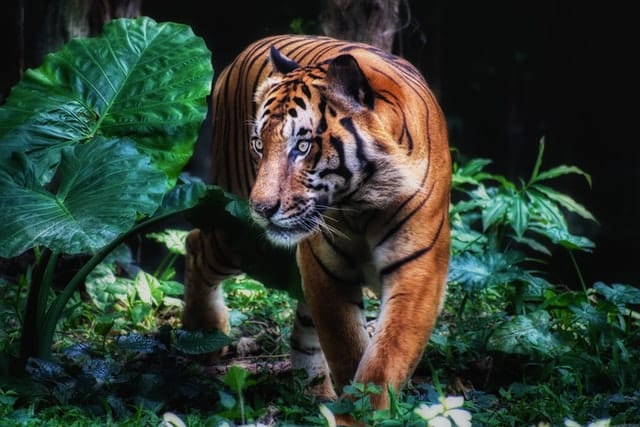
Together with the loss of their habitat, tiger numbers have also been tremendously reduced. In the early 1900s, there were around 100,000 tigers throughout their range. Today, just in one century, the estimated tiger population in the wild has been declined to as few as 3,200 globally whereas in Nepal alone there are 198 tigers as per the survey conducted in the year 2013 marking an increment in the population by 63% from the last survey in 2009. Amazing animal from Wildlife in Nepal.
Snow Leopard
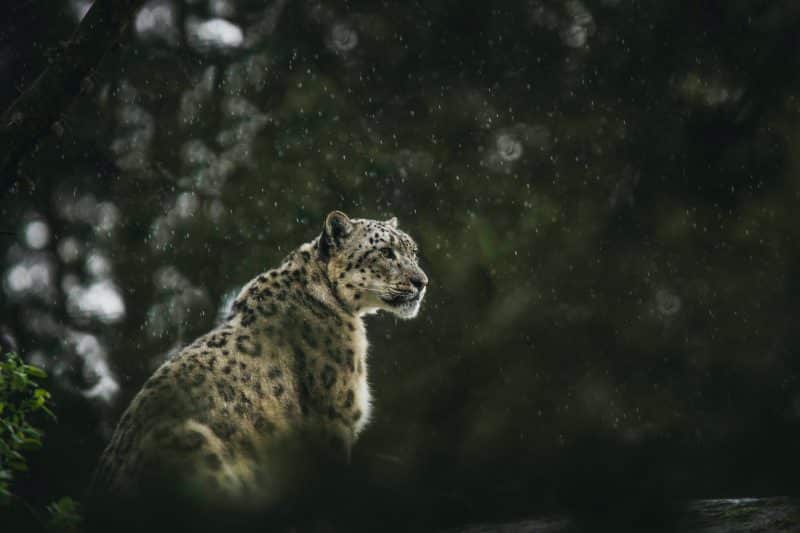
Snow leopards are found only in the mountains of central Asia and the Himalayas. It is estimated that there are about 4,510-7,350 snow leopards. The total potential snow leopard habitat is about 1,835,000 km 2 in 12 snow leopard range countries. In addition, some 600-700 animals survive in zoos around the world.
In Nepal, snow leopards are distributed along its northern frontier. Of these, the districts of Mustang, Mugu, Dolpo and Humla feature prominently for snow leopard populations. A habitat suitability index model of snow leopard habitat in Nepal ‘s northern frontier suggests an estimated population of 350-500 animals in Nepal, constituting one-tenth of the world’s snow leopard population.
Based on sightings, reports and anecdotal oral history, snow leopard presence has been suggested in 8 mountain protected areas of Nepal. This includes the Annapurna Conservation Area.
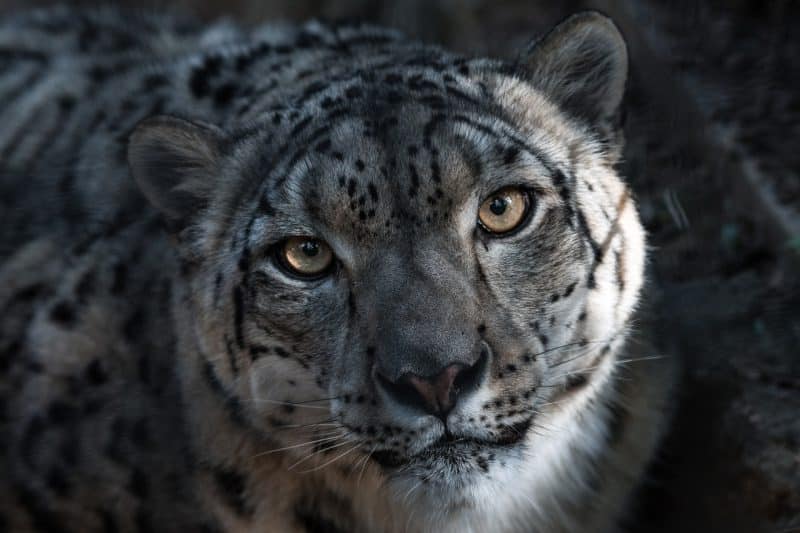
The smoky-gray snow leopard weighs about 35-55 kg (female: 35-40 kg, male: 45-55). Measures about 1.8-2.3 m in length from head to tail and stands 60 cm at its shoulder. Snow leopards are characterized by a short, broad muzzle, short fore limbs and long hind limbs that provide agility in steep and rugged terrain. Their body fur is tinged with yellow with prominent dark grayish-black rosettes and spots.
The characteristic long tail aids in balancing on cliffs and rugged places. Also, snow leopards wrap their body and face with the tail for comfort and warmth against the cold. Large paws perhaps help them walk better on snow.
Mating occurs between January and March. Cubs are born in late spring or early summer, and may spend their first few weeks in rock crevices which serve as hidden den sites. Cubs become independent of their mothers at 18-22 months of age.
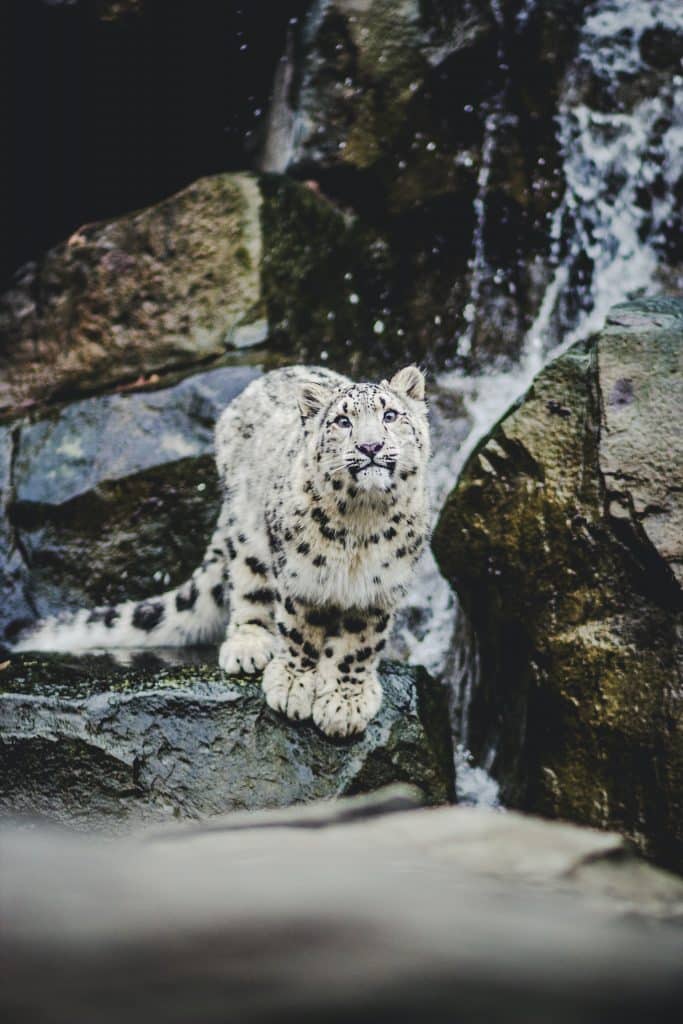
Threatened Population
Despite Nepal ‘s efforts to save the snow leopard, its long-term viability is threatened by the conflict from livestock depredation. Things like retaliatory killings, poaching, and loss of habitat because of high density of livestock in grazing areas also have an effect.
The snow leopard-human conflict is one of the main threats to its survival because it is known to kill sheep, goats, horses, and yak calves. Degradation of snow leopard habitat continues due to year-round grazing pressure following the closure of the Tibetan border some 30 years ago.
As snow leopards are opportunistic predators, they often kill livestock because of high encounter rates and ineffective guarding by herders. Poaching is primarily associated with the trade in snow leopard pelts, bones, and body parts that are used in medicine. As an illicit trans-border market exists between northern frontiers of Nepal and the Tibet Autonomous Region of China, poaching has become lucrative. Great part of Wildlife in Nepal.
Conservation efforts
Of all protected areas in Nepal, have initiated several grass-root measures in conservation. The Annapurna Conservation Area Project (ACAP) of National Trust for Nature Conservation has instituted 8 local snow leopard conservation committees (SLCCs) since 1993.
Likewise, the Department of National Parks and Wildlife Conservation and WWF Nepal have supported several workshops on survey methods and field techniques. In addition, WWF has produced a “Snow Leopard Manual: Field Study Techniques for the Kingdom of Nepal “. Which is a comprehensive and valuable field guide.
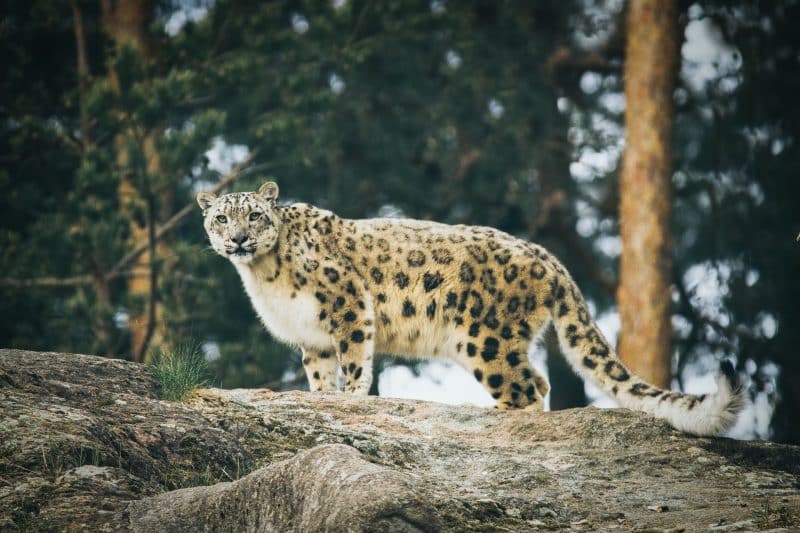
In Shey Phuksundo, there are 5 snow leopard conservation committees comprising herders, women and village leaders and elders. Similar efforts are being made in Kangchenjunga Conservation Area (KCA) through the WWF Nepal. Last year, the KCA survey and monitoring team destroyed 200 large mammal traps and snares, confiscated 2 muzzle-loading guns, and several musk deer skins.
The team has a strong presence in local communities of Taplejung and can perform field surveys independently. Therefore, such activities not only gather much-needed information on the snow leopard and its prey but also improve human resource development and deter poaching activities.
Several national and international conservation organizations and development agencies are now involved in the conservation of the snow leopard. They include the Department of National Parks and Wildlife Conservation, the Department of Forest, the National Trust for Nature Conservation, WWF Nepal, the International Snow Leopard Trust, UNDP/ GEF, USAID and many others.
Summary of Wildlife in Nepal

Clearly, Nepal is home to some of the most incredible animals around the globe. Sadly, these populations are ever declining and it is an unfortunate universal truth that not enough is being done to help save these gorgeous animals.
Check our our other blogs! Wildlife in Thailand , Wildlife in Vietnam and many more which might interest you!
Frequently Asked Questions (FAQs)
The Asian elephant is the largest animal in Nepal. It stands around 2.5 to 3 meters tall at the shoulder and can weigh up to 5,000 kg.
The snow leopard is considered a rare and elusive animal in Nepal. It’s found in the mountains of central Asia and the Himalayas. It is known for its smoky-gray fur and distinctive rosette patterns.
Many animals are found in Nepal’s forests. This includes tigers, leopards, various species of deer, red pandas and various primates. There is also a wide variety of bird species.
As of the last survey conducted in 2013, there were around 198 tigers in Nepal. This marked an increase in the population by 63% from the previous survey in 2009.
Exact data on tiger attacks in Nepal may vary from year to year. Tigers are known to occasionally come into contact with humans living in or near their habitats. This can lead to conflicts. Local authorities and conservation organizations work to minimize such conflicts and ensure the safety of both humans and tigers.
Join our Forum for free today!

- Third Elk Incident in Two Weeks in Estes Park, Colorado and How to Stay Safe - July 4, 2024
- 17 Animals That Mate For Life - June 24, 2024
- 13 Animals That Lay Eggs (Some Might Surprise You!) - June 16, 2024

